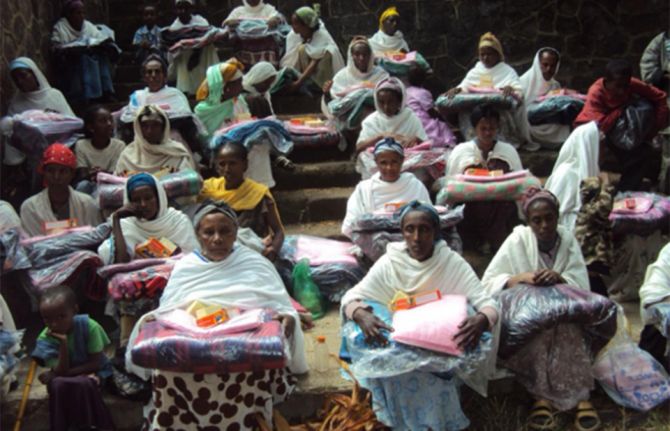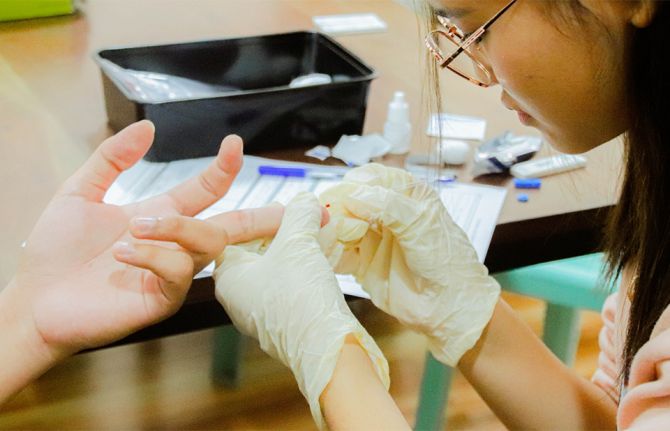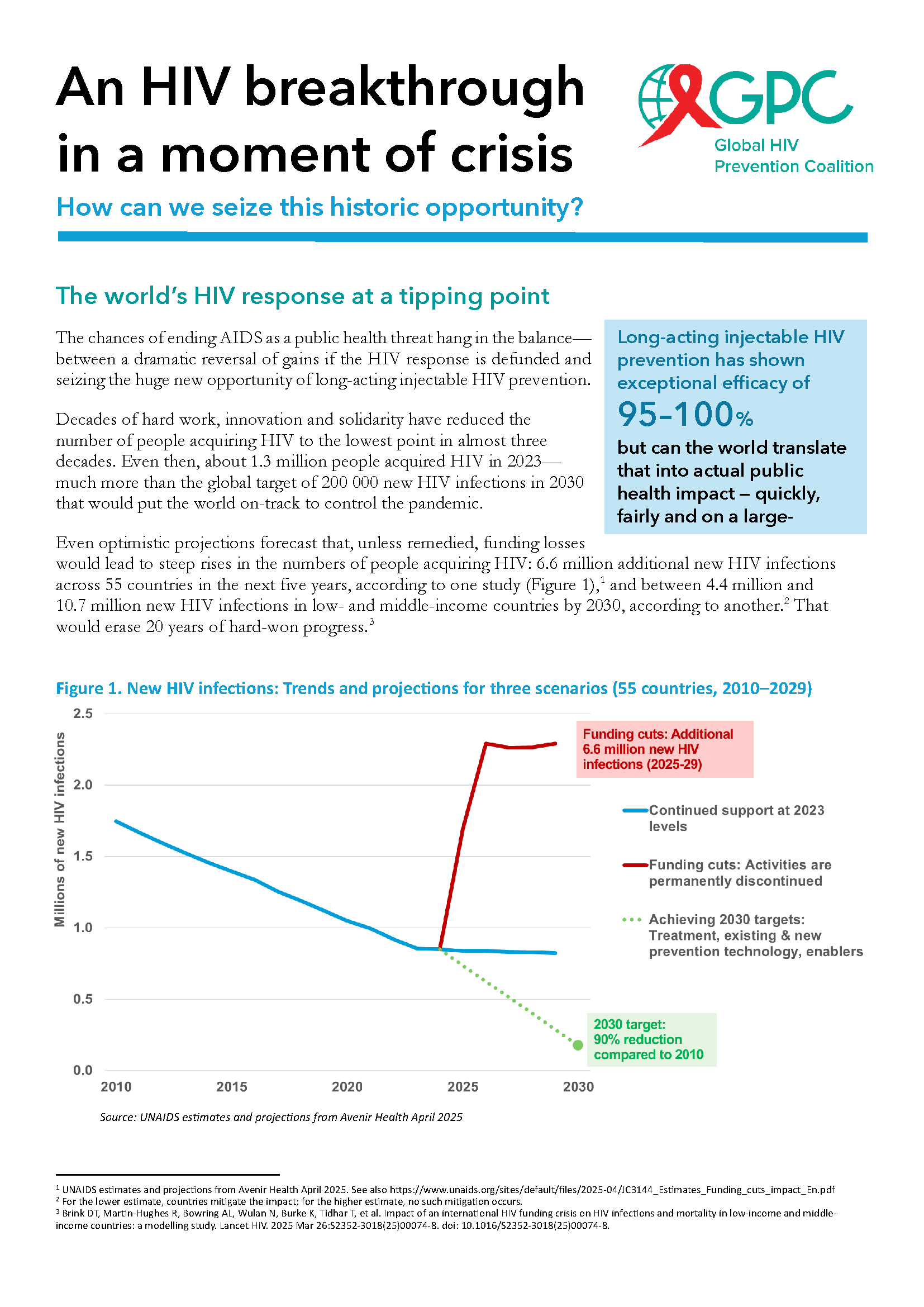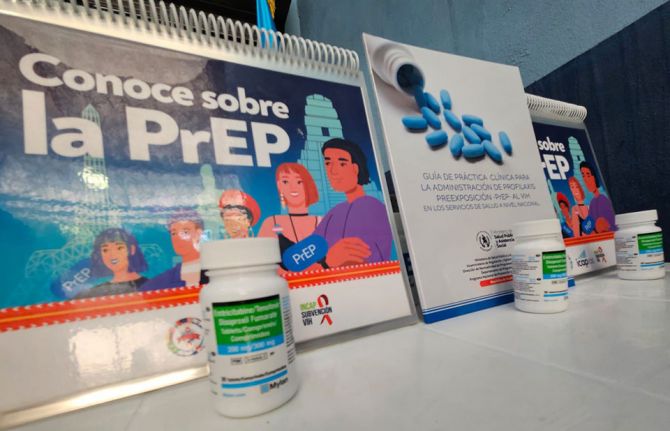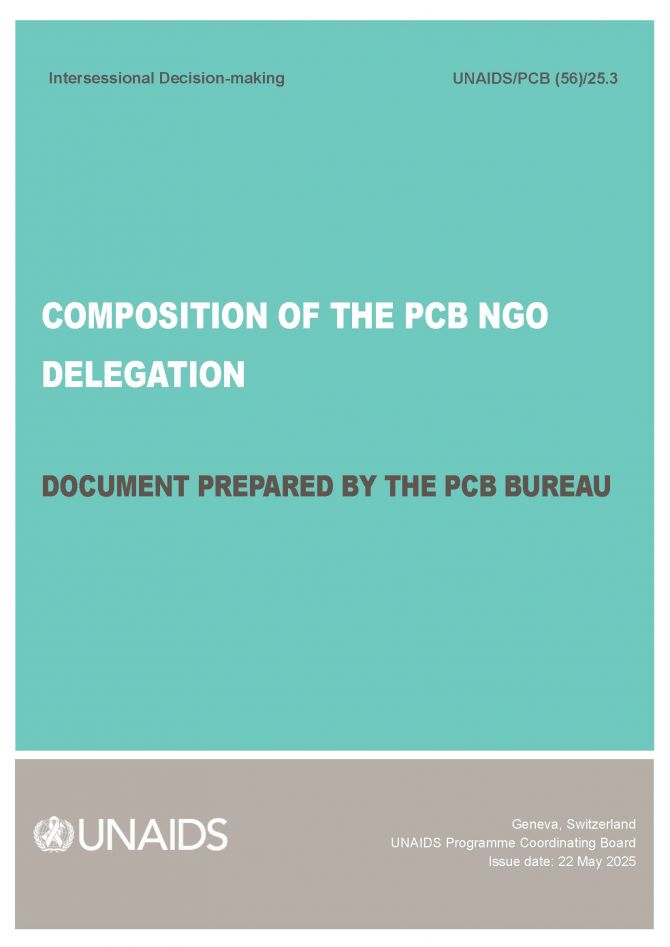
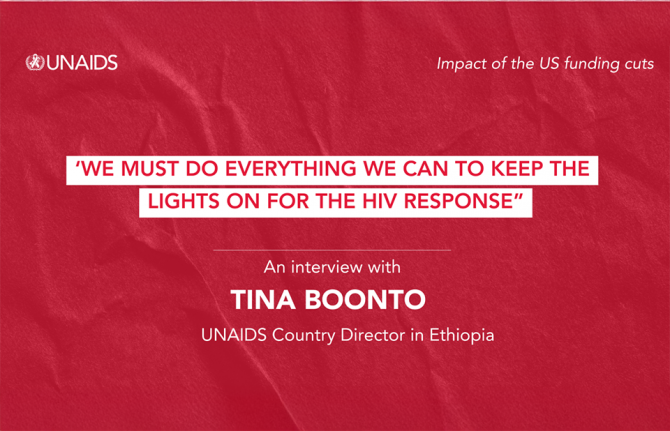
Feature Story
“We must do everything we can to keep the lights on for the HIV response” says UNAIDS Country Director for Ethiopia Tina Boonto
26 May 2025
26 May 2025 26 May 2025Ethiopia, with a population of 130 million, is Africa’s second most populous country. Despite steady economic growth approaching low-middle income status, the country faces a daunting number of challenges, from economic pressures and development needs to recurring natural disasters such as droughts and floods, as well as conflict and other man-made crises. These factors mean Ethiopia still relies heavily on external aid-particularly for food security and humanitarian assistance.
On top of these existing burdens, HIV remains a significant public health challenge. The country is home to an estimated 610 000 people living with HIV, with over half a million currently on life-saving antiretroviral treatment-most of which is funded by international donors. Recent cuts in US funding have put Ethiopia’s HIV response at risk, threatening to reverse years of progress and placing additional strain on an already fragile health system.
We sat down with Tina Boonto, UNAIDS Country Director for Ethiopia, to discuss the impact of the funding crisis, the government’s response, the resilience of communities, and what needs to happen next to protect Ethiopia’s HIV response.
Q: What is the current situation, and how has the recent US funding crisis impacted the HIV response?
Ethiopia has made significant progress in its HIV response in recent years and is on track to reach the UNAIDS 95-95-95 targets with 90% of people living with HIV in the country being aware of their HIV status; 94% of those diagnosed with HIV receiving antiretroviral (ARV) therapy; and 96% of people on ARV therapy achieving viral suppression. The US Government through PEPFAR and the Global Fund have been the primary funders for the HIV response, supporting treatment for over 530 000 of the estimated 600 000 people living with HIV in the country. However, the sudden cuts had a devastating impact. Critical services have stopped, people have lost their jobs, and many clinics have closed their doors. People living with HIV now face uncertainty about their access to medication, testing, and prevention services.
In Bahir Dar, for example, programmes for key population have stopped, outreach workers have lost their jobs, and peer support groups have been terminated. It’s heartbreaking to see the situation on the ground. Clients arrived at clinics to find them closed, and many were left without guidance or support.
Women are anxious about the availability of medication and prevention tools like condoms. Without these, the risk of HIV transmission increases, and the health of those already living with HIV deteriorates. Some cannot even afford basic necessities like food, let alone treatment.
Q: How are communities responding to the collapse of HIV services?
Despite the collapse, communities are showing incredible resilience and a fighting spirit. Peer educators, youth groups and mothers are stepping in where formal systems are failing. For example, in the Afar region, a case manager working with people living with HIV continued his outreach work despite funding cuts. He was able to get funding from the health bureau and shared “even if the money is not enough, I’m happy to continue to help reach people living with HIV, providing pregnant women information on how to prevent transmission to their babies”.
But while these community-led efforts are inspiring, they cannot replace the need for sustainable funding. Community members often live below adequate income levels, and they need support for basics like transport and food. UNAIDS is encouraging the government to consider a social contract with community organizations-similar to Ethiopia’s successful Health Extension Worker model-so that peer outreach workers can be formally supported and paid for their essential outreach work.
The reason why we are pushing for outreach workers to be supported is because stigma and discrimination remain significant barriers. Even after 40 years of the HIV epidemic, people living with HIV in Ethiopia still experience stigma, which deters them from seeking care at public facilities. Many fear being discriminated against or not receiving adequate services. This is why the role of community peer outreach is so vital. Without armies of community outreach workers, especially in high-burden areas, it’s impossible to have a successful HIV programme.
Q: What lessons can be drawn from this crisis for the future of HIV response in Ethiopia and beyond?
The crisis has exposed the fragility of systems built around a single funding stream. When the money stopped, so did services, trust, and hope. We must build resilience into the system from the start. Community-led organizations must be recognized as essential, and youth-led innovation must be scaled up. Emergency preparedness and integrated, people-centered solutions are crucial, especially as HIV intersects with conflict, displacement, and gender-based violence. HIV must remain central to humanitarian, development and recovery agendas-not as an afterthought, but as a foundation.
UNAIDS is also supporting by working on producing an investment case to prioritize key components of the HIV programme for government funding. There are ongoing discussions about new partnerships with the private sector and exploring alternative financing mechanisms. There is political will. The Ministry of Health is considering adopting the methodology of the HIV Sustainability Roadmap to develop a broader health sector sustainability strategy. UNAIDS is supporting these efforts by helping to produce a sustainability strategy and mobilizing resources alongside other donors
Q: What steps is the Ethiopian government taking to address the funding crisis?
The government recognizes this as a wake-up call and is actively considering solutions to find resources to cover priority health issues, including HIV, tuberculosis, and malaria. However, the scale of the challenge is enormous-external assistance for Ethiopia’s health, humanitarian and development needs amounts to around US$ 2.7 billion annually. The government is exploring options such as introducing a social tax, where all workers would contribute to health funding, but this is still under parliamentary discussion. While these efforts are encouraging, they are not yet sufficient to fill the gap left by international donors.
Q: How is UNAIDS supporting the government and the HIV response during this crisis?
UNAIDS is playing a critical role. In response to the funding crisis, we conducted immediate impact surveys to understand which programmes have stopped or are ongoing, and what the consequences are on the ground. This information feeds into the national plans and sustainability plan.
We are also producing an investment case to help the government prioritize key components of the HIV programme for domestic funding. Our costing data enables us to propose affordable models, like social contracting with community organizations.
We are reviving HIV prevention efforts, including using AI-powered digital platforms and chatbots to reach young people with real-time information. Ethiopia was also piloting long-acting injectable antiretroviral medicine to prevent HIV or ‘PrEP’ before the funding cuts stopped this progress.
Finally, we are working closely with the Ministry of Health, the Global Fund, and community organizations to mobilize resources and advocate for integrated, sustainable solutions.
Q: What is your message to the international community at this critical juncture?
We need global solidarity now more than ever. We are so close to ending AIDS as a public health threat by 2030. Over half a million people in Ethiopia are on antiretroviral treatment—we cannot let them down. The world has come too far, and too many have sacrificed too much to let progress slip away now. We must do everything possible to keep the lights on for the HIV response, both in Ethiopia and globally.
The resilience of Ethiopian communities is inspiring. People are refusing to give up, finding new ways to support each other and keep the response alive. With renewed commitment from the government, partners, and the international community, we can protect the progress made and continue moving towards ending AIDS as a public health threat.
The Joint United Nations Programme on HIV/AIDS (UNAIDS) leads the global effort to end AIDS as a public health threat by 2030 as part of the Sustainable Development Goals.
Following the US funding cuts in January, UNAIDS is working closely with governments and partners in affected countries to ensure that all people living with or affected by HIV continue to access life-saving services. For the latest updates, please visit unaids.org
Related resources
Watch: Tina Boonto, Ethiopia Country Director: Communities are going out of their way but they need help
Watch: UNAIDS asking government to increase domestic funding for the HIV response in Ethiopia
Watch: "We cannot let people down," says Tina Boonto, Country Director in Ethiopia
Region/country

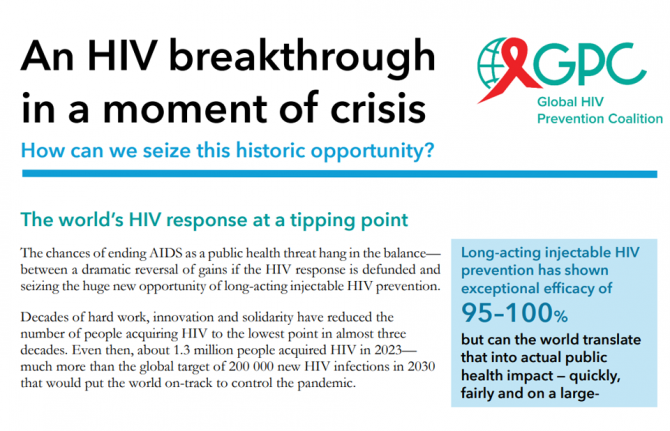
Feature Story
Global leaders convene to accelerate access to long-acting HIV prevention technologies amidst funding cuts
23 May 2025
23 May 2025 23 May 2025The global response to HIV has reached a crucial juncture. Groundbreaking scientific advances, including the development of long-acting HIV prevention technologies like lenacapavir and cabotegravir, offer a transformative opportunity to curb the epidemic.
Long-acting injectables, which were hailed by Science magazine as one of the major breakthroughs in science in 2024, have shown exceptional efficacy, with lenacapavir demonstrating nearly 100% protection against HIV infection.
Despite these unprecedented advancements, the HIV response faces a dire threat from severe funding cuts. With more than 1.3 million new HIV infections annually, three times the target for 2025, financial constraints and a lack of sustained political will threaten to undo decades of progress. Global health experts warn that without urgent action to ensure continued investment, the ability to scale these life-saving technologies will be jeopardized, leaving millions at risk.
On the eve of the 78 World Health Assembly, global health leaders, government ministers, pharmaceutical companies, and civil society representatives gathered at UNAIDS headquarters in Geneva for the High-Level Multisectoral Leadership Dialogue on HIV Prevention. This High-Level dialogue, organized by the Global HIV Prevention Coalition and co-hosted by UNAIDS in collaboration with UNFPA, WHO, and UNDP, the Federal Republic of Brazil, and the Kingdom of the Netherlands, focused on accelerating access to long-acting HIV prevention technologies and advancing sustainable prevention systems.
Referring to the current funding crisis, Winnie Byanyima, Executive Director of UNAIDS, warned that “If we continue down this path, we could see an additional 6 million HIV infections and 4 million AIDS-related deaths by 2029. Put simply, we will lose control of the AIDS pandemic. But we have an opportunity today. We have new, long-acting HIV prevention tools that could fundamentally reshape the HIV response, putting us back on the right path.”
Global leaders presented successful national models from Africa, Asia and Latin America, illustrating how innovative prevention strategies are being implemented despite financial challenges. Mariangela Simao, representing Brazil, said “PrEP in Brazil is now a reality. We initially set a target of reaching 50,000 people with PrEP by 2025, but we’ve already surpassed that milestone, with 122,000 people currently using it. Our next goal is to reach 300,000 users by next year. Data shows that HIV incidence is declining in cities with more than 100,000 inhabitants where PrEP coverage is higher.”
Global HIV Prevention Coalition co-chair and CEO of AVAC, Mitchell Warren called for choice in HIV prevention.
“Condoms work well for some people and situations. Oral PrEP is safe and effective for those who can adhere to daily pill taking. The monthly dapivirine vaginal ring is a preferred option for some women, as is voluntary medical male circumcision for many men, while harm reduction is highly effective for people who inject drugs. Now, long-acting injectables offer an additional option for the many people who struggle to protect themselves from HIV and want more convenient and discreet prevention options.”
Key panel discussions focused on the cost of inaction, the significance of equity in access, and the role of long-acting prevention in the future HIV prevention toolkit.
The event underscored the urgent need for a multisectoral approach to overcoming structural barriers to prevention, including regulatory, financial, and societal challenges. The discussions highlighted that global solidarity and sustained political will are essential to closing the prevention gap and achieving the UNAIDS 2030 targets of fewer than 200 000 new HIV infections annually.
Ambassador Paul Bekkers, Permanent Representative of the Netherlands to the UN, closed the dialogue with a powerful call to action: “Not acting now means leaving a larger HIV epidemic to the next generation. Or we can put the world on course to achieve HIV epidemic control and eventually the end of AIDS as a threat to public health. As members of the Global HIV Prevention Coalition, we can achieve this together.”
As part of this pivotal moment, UNAIDS and the Global HIV Prevention Coalition launched a new brochure titled An HIV breakthrough in a moment of crisis: How can we seize this historic opportunity?
Our work
An HIV breakthrough in a moment of crisis; How can we seize this historic opportunity?

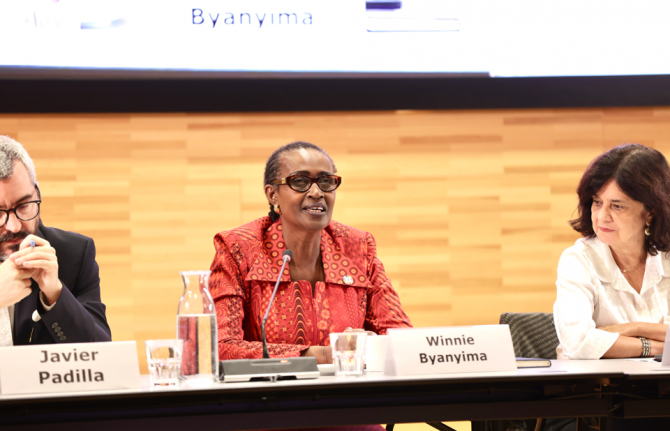



Feature Story
Global health leaders: Pandemic Agreement can help fight inequalities and AIDS
22 May 2025
22 May 2025 22 May 2025Global health leaders called for the Pandemic Agreement adopted at the 78th World Health Assembly to deliver where past efforts failed—equitable access to life-saving technologies and services during times of crisis.
The call took place during an event organized by the UNAIDS’ convened Global Council on Inequality, AIDS and Pandemics featuring senior South African diplomat, Precious Matsoso, Co-Chair of the Intergovernmental Negotiating Body for the Pandemic Agreement, UNAIDS Executive Director Winnie Byanyima, former Health Minister of Brazil Nísia Trindade, and Spain’s Health Secretary Javier Padilla Bernáldez.
The panel reflected on decades of experience from the global HIV response, how its lessons were not learned during the rollout of COVID-19 vaccines, and what needs to change before the next global pandemic crisis.
“This agreement makes it clear that a principle of pandemic response will be sharing what has been paid for publicly. This is so important for us,” Ms Byanyima told participants. “Twelve million people in Africa died waiting for HIV antiretrovirals; they say that 1.3 million lives could have been saved during COVID-19 had the vaccines been shared equitably. This agreement has laid a foundation for building on that experience and ensuring that never again will millions around the world be dying when a life-saving technology is there.”
Precious Matsoso, a former Director-General of South Africa’s National Department of Health, said that the Pandemic Agreement is “not the end in itself, but the beginning of a process” in addressing inequalities in pandemic preparedness and response, and that even while countries are ratifying the agreement, they can act on its principles and provisions.
“You don't have to wait to ensure that there is personal protective equipment for your health workforce, you don't have to wait to start strengthening your health system,” she said. “If you want products to be approved, if you want research and development to happen, if you want diversified local protection ... you don't have to wait. You can start having those measures put in place in different countries.”
Former Minister Trindade stated that, in September 2021, 76% of the world’s COVID-19 vaccine supply was concentrated in only 10% of the world’s countries. Brazil and the G20 have launched a Global Coalition on Local and Regional Production, Innovation and Equitable Access that aims to strengthen the capacities of countries to develop and manufacture health technologies for neglected disease, like Dengue, and diseases that impact vulnerable populations, like HIV.
“As technology and the scientific basis of [disease control] have advanced, at the same time, inequalities [in access] have enlarged,” Trindade said. “Diseases that were not seen as neglected became neglected, because it's not a problem of the disease, it's a problem of power, economic interest and so on.”
Ms Byanyima noted that innovative technologies for the AIDS response, such as long-acting injectable antiretroviral medicines for HIV prevention and treatment, have been slow to rollout, and global targets for pre-exposure prophylaxis, known as PrEP, will not be reached.
A promising long-acting antiretroviral from Gilead Sciences, lenacapavir, requires only two injections per year to prevent HIV infection. Gilead has signed agreements with six companies to make and sell generic lenacapavir. UNAIDS has called for more manufacturers in the Global South, and especially sub-Saharan Africa, to be granted licences, and for the generic version to be sold in more countries in order to accelerate access.
“There is this amazing technology that Gilead has invented,” Ms Byanyima said, “However, it's not yet available. And it could take years and years to become available. This is not a way to fight and win against a pandemic.”
Secretary Padilla Bernáldez said that the technology transfer provisions in the Pandemic Agreement could help accelerate access. “The pandemic agreement is going to be the framework that we are going to use when talking about lenecapavir,” Mr Padilla said. “These words on technology transfer [in the Pandemic Agreement] are maybe not the ideal that we would have chosen, but for sure, they are going to make us able to go further.”
Moderator Matthew Kavanagh, Director of Georgetown University’s Center for Global Health Policy & Politics, called on countries to make the most of the opportunities created by the historic agreement. “The Pandemic Agreement is not everything we would want, but it is the beginning of a powerful movement ... a sign that global health, despite reports of its death, is far from dead,” he said. “We can keep pushing towards something that is equitable, powerful, and improves people's health.”
Watch the full event:


Press Release
UNAIDS encouraged by comments from Elon Musk that he will fix the US funding crisis for HIV services
21 May 2025 21 May 2025Mr Musk made the remarks during an interview with Bloomberg’s Mishal Husain at the Qatar Economic Forum on 20 May
GENEVA, 21 May 2025—UNAIDS is deeply encouraged by the statement from Elon Musk that he will fix the current crisis related to a lack of US Government funding for lifesaving HIV services. UNAIDS is tracking daily the impacts of US funding cuts on HIV services for people living with and affected by HIV around the world as the data and stories of impact on UNAIDS website show.
Currently, many HIV prevention programs supported by the US President's Emergency Plan for AIDS Relief (PEPFAR) have been stalled. The Administration issued a limited waiver providing for continuity of some services, including comprehensive HIV testing and treatment, but it is not being fully implemented within countries, and the waiver excludes almost all HIV prevention services except those for pregnant and breastfeeding women.
For detailed, specific examples of the impact of US funding cuts in dozens of countries see here: Impact of US funding cuts on the global HIV response | UNAIDS
UNAIDS estimates indicate that the permanent discontinuation of HIV prevention and treatment programmes currently supported by PEPFAR would, between 2025 and 2029, lead to:
- An additional 6.6 million new HIV Infections.
- Around 2300 additional new HIV infections per day.
- An additional 4.2 million AIDS-related deaths.
- Over 600 additional AIDS-related deaths per day.
Estimating the potential impact of HIV response disruptions
We can end the AIDS pandemic, but we cannot do so without continued partnership and leadership by the US on HIV prevention efforts for those most in need. Latest estimates show that 1.3 million people were newly infected with HIV in 2023; many were among the most marginalized and vulnerable groups, including young women and girls. Every week some 4000 young women and girls became infected in 2023.
Some countries relied on PEPFAR for over 95% of their funding for HIV and while UNAIDS has been supporting countries' transition to self-reliant nationally funded responses, this transition must be done methodically to ensure no more lives are lost during this process.
UNAIDS has also been impacted by US funding cuts; given the critical roles UNAIDS is playing to build a sustainable future for the AIDS response, the cuts undermine continued progress to end AIDS and transition to sustainability nationally owned and financed HIV responses.
UNAIDS is encouraged by Mr Musk’s remarks and urges the US to continue their leading role in ending AIDS by restoring HIV prevention and treatment funding to countries most affected by HIV. UNAIDS stands ready to work hand in hand with the US to help support sustainable transitions in the coming months and into the future.
Watch original interview:
UNAIDS
The Joint United Nations Programme on HIV/AIDS (UNAIDS) leads and inspires the world to achieve its shared vision of zero new HIV infections, zero discrimination and zero AIDS-related deaths. UNAIDS unites the efforts of 11 UN organizations—UNHCR, UNICEF, WFP, UNDP, UNFPA, UNODC, UN Women, ILO, UNESCO, WHO and the World Bank—and works closely with global and national partners towards ending the AIDS epidemic by 2030 as part of the Sustainable Development Goals. Learn more at unaids.org and connect with us on Facebook, Twitter, Instagram and YouTube.

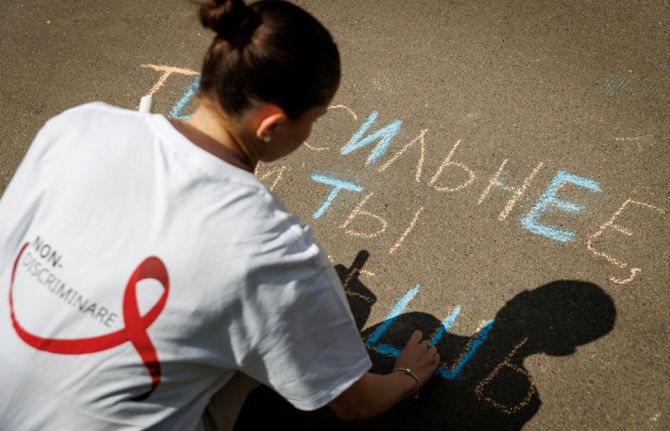


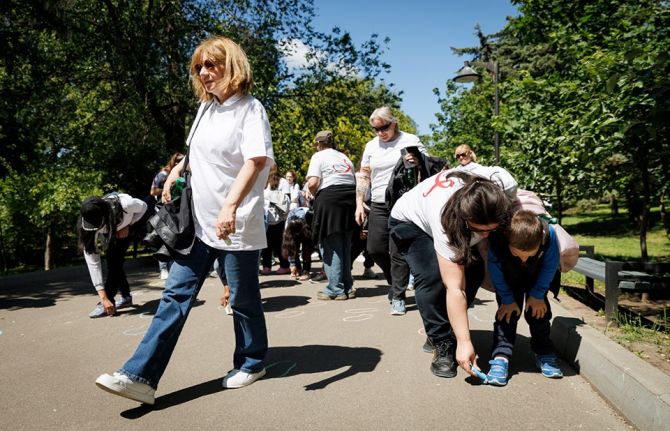
Feature Story
Towards stigma-free healthcare for people living with HIV in Moldova
23 May 2025
23 May 2025 23 May 2025In the heart of Chișinău, Moldova, medical students, healthcare workers, civil society members, and representatives of the international community took a symbolic step toward a more inclusive, respectful, and stigma-free health system.
To commemorate International AIDS Candlelight Memorial Day and under the theme of “In Their Shoes”, the event was organized by UNAIDS in partnership with the Association of Medical Students and Residents, the Nicolae Testemițanu State University of Medicine and Pharmacy and the Ministry of Health of the Republic of Moldova. The event marked a growing movement to end HIV-related stigma in Moldova’s healthcare system—a transformation already underway in medical education.
Since 2023, the Nicolae Testemițanu State University of Medicine and Pharmacy, with technical support from UNAIDS and financial backing from the Embassy of Sweden, has introduced Human Rights in Healthcare as a compulsory course across all faculties. Rather than remaining a stand-alone subject, human rights principles are now embedded in core clinical disciplines such as surgery, gynecology, oncology, infectious diseases, and family medicine, including training on how to treat people living with HIV and members of key populations.
“Patients today are more informed. They understand their rights,” said Dr Virginia Salaru,
vice-director of the Didactic and Academic Quality Management Department and Associate Professor. “And medical professionals must be ready, not just scientifically, but ethically.”
This reform is timely. Despite progress in HIV prevention and treatment, stigma in healthcare remains a major barrier. According to the Stigma Index 2.0, people living with HIV, especially those from key populations such as people who use drugs, sex workers, men who have sex with men, and transgender people, continue to face breaches of confidentiality, avoidance by medical staff, and discriminatory treatment.
“Despite all our achievements today, despite having antiretroviral therapy, knowledge, and experience, I still hear stories of despair, rejection, and stigma every day. Sadly, people are still dying, not from the virus, but from attitudes and indifference,” said activist Irina Goreaceaia.
“As the authority responsible for public health, we want every person living with HIV to have equal access to diagnosis, treatment, and support,” said Angela Paraschiv, Secretary of State, Ministry of Health. “HIV does not have to be a social condemnation. The health system offers the support people need to live normal lives — with dignity, not isolation.”
In partnership with UNAIDS, the university conducted a curriculum review through a human rights lens. It identified critical gaps including the fact that, while ethics were taught in theory, students were not being prepared to navigate real-world complexities such as stigma, patient diversity, and discrimination. The updated curriculum now trains students in assertive communication, confidentiality, and patient autonomy regardless of HIV status, gender identity, or background.
“Healthcare should be a place of healing, not harm,” said Svetlana Plamadeala, UNAIDS Country Director for Moldova. “Stigma has no place in clinics, hospitals, or maternity wards. Every person living with HIV deserves privacy, respect, and access to care.”
This effort is part of the broader United Nations programme which includes training more than 250 healthcare workers in rights-based approaches and stigma reduction. Called “Strengthening Human Rights on Both Banks of the Nistru River,” the programme consists of a series of student-led initiatives, public awareness campaigns, and community engagement to reinforce these lessons across Moldova’s campuses and clinics.
Early results are promising. Anonymous student evaluations show high satisfaction with the human rights curriculum, and practical implementation has already started across disciplines.
“In addition to the Human Rights course, the campaigns, flash mobs, and student-led initiatives really opened our eyes,” said Cătălina Repesciuc, a second-year student at the university. “Understanding stigma, especially around HIV, is essential not just in theory, but for how we interact with real patients in everyday practice.”
Katarina Fried, Ambassador of Sweden to Moldova, emphasized that “this initiative combines solidarity, education, and human rights. Our project with the UN reinforces these values on both sides of the Nistru River. The active involvement of students and health authorities shows what social responsibility looks like in action.”
Moldova’s message is clear: healthcare must be grounded in respect, dignity, and rights. And thanks to support from UNAIDS and Sweden, that transformation is already underway — in the classroom, in clinics, and in the minds of the next generation of healthcare professionals.
“You wear a white coat for only a few hours a day, the rest of the time, you are a patient like anyone else,” said Dr Cocieru-Salaru. “Treat your patients the same way you want to be treated. Always ‘walk in their shoes’,” she added.


